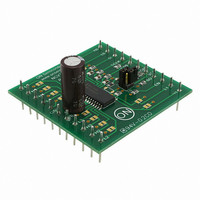NCV7708AGEVB ON Semiconductor, NCV7708AGEVB Datasheet - Page 15

NCV7708AGEVB
Manufacturer Part Number
NCV7708AGEVB
Description
EVAL BOARD FOR NCV7708AG
Manufacturer
ON Semiconductor
Specifications of NCV7708AGEVB
Design Resources
NCV7708 EVB BOM NCV7708GEVB Gerber Files NCV7708 EVB Schematic
Main Purpose
Power Management, Half H-Bridge Driver (Internal FET)
Embedded
No
Utilized Ic / Part
NCV7708
Primary Attributes
6 Channel High & Low Side Internal Switch
Secondary Attributes
SPI Interface
Silicon Manufacturer
On Semiconductor
Silicon Core Number
NCV7708A
Kit Application Type
Driver - Bridge
Application Sub Type
Half Bridge Driver
Development Tool Type
Hardware - Eval/Demo Board
Rohs Compliant
No
Lead Free Status / RoHS Status
Lead free / RoHS Compliant
For Use With/related Products
NCV7708AG
Other names
NCV7708AGEVBOS
and may be divided between nodes to separate thermal
behavior due to one portion of the network from another.
The Foster networks, though when sorted by time constant
(as above) bear a rough correlation with the Cauer networks,
are really only convenient mathematical models. Both
Foster and Cauer networks can be easily implemented using
The Cauer networks generally have physical significance
Figure 13. Non−Grounded Capacitor Thermal Ladder (“Foster” Ladder)
Time constants are not simple RC products. Amplitudes
of mathematical solution are not the resistance values.
Each rung is exactly characterized by its RC−product
time constant; amplitudes are the resistances.
Figure 12. Grounded Capacitor Thermal Network (“Cauer” Ladder)
Junction
Junction
C
C
1
1
R
R
1
1
C
C
2
2
R
R
2
2
http://onsemi.com
C
C
3
3
R
R
15
3
3
circuit simulating tools, whereas Foster networks may be
more easily implemented using mathematical tools (for
instance, in a spreadsheet program), according to the
following formula:
(thermal ground)
(thermal ground)
Ambient
Ambient
R(t) +
C
C
n
n
R
R
i+1
n
n
n
R i 1 * e
*t tau i






